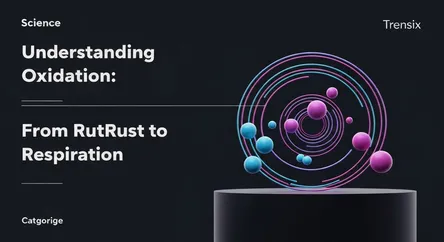Science
Understanding Oxidation: From Rust to Respiration

Explore the essential chemical process of oxidation, from everyday examples like rust to its critical role and health implications in the human body.
What is it?
Oxidation is a fundamental chemical process where a substance loses electrons. This reaction often involves oxygen, hence the name, but doesn't have to. It's half of a paired process known as an oxidation-reduction or "redox" reaction; as one substance is oxidized (loses electrons), another is reduced (gains electrons). This electron transfer is happening all around us. Common examples include iron turning into rust, a sliced apple browning when exposed to air, and the burning of wood in a fire. These transformations are all visible results of oxidation.
Why is it trending?
While a core concept in chemistry, oxidation is increasingly trending in health and wellness discussions due to its link with "oxidative stress." This condition occurs when there's an imbalance between the production of free radicals (highly reactive molecules generated during oxidation in the body) and the body's ability to counteract them with antioxidants. Scientific interest is high as chronic oxidative stress is linked to aging and the development of diseases like cancer, heart disease, and neurodegenerative disorders. This has fueled public interest in antioxidant-rich foods and healthier lifestyles.
How does it affect people?
Oxidation has both vital and detrimental effects. It is essential for life; cellular respiration, the process that converts food into energy for our cells to function, is a controlled oxidation reaction. However, uncontrolled oxidation causes damage. It is responsible for the corrosion of metals and the spoilage of foods, known as rancidity. In the human body, excessive oxidation leads to oxidative stress, which can damage cells, proteins, and DNA. This cellular damage is a contributing factor to inflammation, accelerated aging, and numerous chronic health problems.